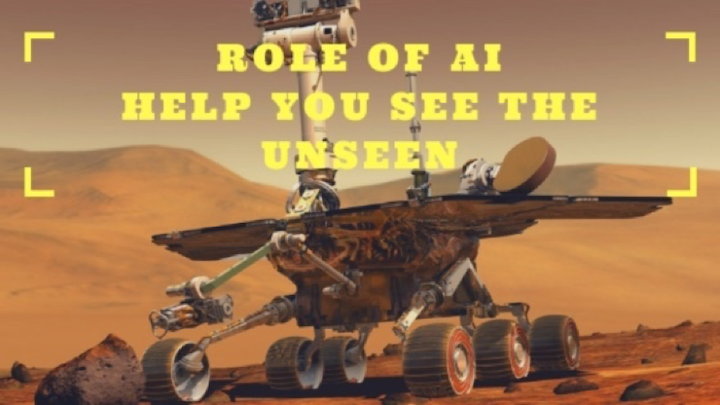
Role of AI in Rapid | Granular | Cost Effective Marketing Analytics
Artificial intelligence and machine learning have been buzzwords in the world of marketing for the past few years. Most of the so called AI and ML has been restricted primarily to tracking and segmenting target audiences for showing relevant ads. The ultimate goal of each of these algorithms is to understand how to best establish a consumer’s journey, and at each point of the journey identify the next best ad to show to maximize the likelihood of conversion.
This objective is quite apt for an ad provider like Facebook, Google or Amazon or other programmatic media platforms.
The applicability of these algorithms to a marketer is somewhat limited. Depending on their sophistication a marketer is going to do the following:
- Establish a model for attribution - last touch, first touch, fractional or some form of algorithmic attribution. 99% of all the attribution tools available in the market fall under this category.
- Feed this model data through available ecosystems. This implies connecting Google Adwords to Google Analytics, adding a FB pixel on their site, and/or add additional tags on their ad units.
- Upload CRM based data lists to the DMP available to the marketer (usually through their agencies) to capture their consumer’s digital journeys, or to find look alikes, and then determine the best time and place to advertise.
However, unless you are a strictly commerce company with spend largely on digital channels, you cannot really estimate the true impact of advertising effectiveness.
Despite the best tracking technology out there, attribution analysis suffers from endogeneity bias i.e. it fundamentally assumes that the consumer touchpoint being considered by attribution analysis is the only set of business drivers that need to be considered.
Hence a marketer needs to considers other methods of incorporating offline sales and marketing data points into their performance analytics. As a result marketers would use tools like marketing mix models, cross channel attribution and survey based research to develop a more complete understanding of their marketing ecosystem. This helps them establish relevant messaging, consumer segmentation and the marketing channels needed to target these consumer segments. This is where AI and ML plays a much broader role than just understanding the next best ad to show to a consumer.
SPECIFICALLY, THE ROLE OF AI CAN BE DIVIDED INTO THE FOLLOWING THREE BUCKETS.
#1 Understanding the voice of the consumer
The consumer provides rich data in form of social media and digital opinions about a brand, product or service. The consumer expresses the drivers of perception, attitudinal inventories & choice, when they discuss their opinions online. By understanding the context of these conversations, a marketer can mine a rich set of attributes for their consumers such that they can develop the consumer’s persona, as well the broad conversation themes that matter. By connecting these themes to sales impact, a marketer can prioritize the themes that are important to address or to build upon. All this is done though the use of deep learning based NLP algorithms, high dimensional covariance estimation algorithms and through the use of state space models. Each of these three areas represent a branch of artificial intelligence and machine learning techniques that I will explain in a later blog.
#2 Leveraging the richness inherent in the data being pulled from various channels.
A marketing campaign typically runs over a short timeframe of 4-8 weeks. However even short run time series data like this is associated with 100s and sometimes 1000s of variables. This high dimensional dataset provides richness that can be exploited to better understand the role of marketing in driving incremental sales. The world of ML provides many high dimensional covariance estimation, and matrix factorization techniques that can enable a better understanding of various drivers of marketing effectiveness.
#3 Rapid, continuous evolution the models to understand various drivers of business including marketing.
It is also possible to use dynamic bayesian models to better understand the evolution marketing effectiveness on a weekly basis. Through techniques like Ensemble Kalman Filters it is possible to track marketing performance with a high degree of reliability in estimation & prediction marketing impact. Furthermore, given that these algorithms are based in control theory, these concepts are used to control marketing for a specific desired impact.
#4 Design rapid test & learns to experiment quickly and learn quickly about the market.
Ability to continuously track shift in marketing effectiveness, also enables a better understanding of the impact of ongoing test & learn activities. Unlike traditional, static regression models, dynamic models provide a better mechanism to understand changes in effectiveness of various marketing channels on a weekly/daily basis, and hence it is easier to design short time period tests & learn from the outcomes.
One last but important point that needs to be made around AI/ML in marketing science. The role of AI/ML is to make the process of estimation & prediction of marketing impact more reliable & sophisticated. However this does not need to come at a high cost. Because of the technology under-pinnings of most ML frameworks, it is possible to automate most of this analytics, and provide this at an affordable enough cost. It is not uncommon to see a 50x - 300X ROI on the spend on such marketing AI/ML capabilities.\
Join us on Oct 11th at Attribution Accelerator to learn more how Reynolds Consumer Products has been leveraging Kvantum Rapid Read solution for multiple years.
2019 Kvantum, Inc.